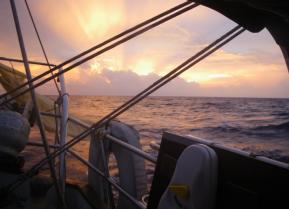China's Worst Nightmare: RIMPAC 2020 in the South China Sea?
Holding the next RIMPAC 2020 in the South China Sea would be a real game changer.
So, the question is whether there’s indeed been a long-term sea-change in U.S. thinking and behavior towards Chinese Communist Party (CCP)-led China. There are grounds for hope—Taiwan is getting more support, the People’s Liberation Army Navy (PLAN) was disinvited from RIMPAC 2018, and real trade pressure is finally being applied against Beijing. Chinese investment in the United States is being more closely scrutinized, and the U.S. government is promoting public-private development efforts in Asia and Africa to offer a better economic alternative to China’s Belt and Road Initiative strong-arming.
But it’s still unclear if America can re-learn political warfare and influence operations in order to speak up on behalf of consensual government and individual liberty while countering Chinese strategic narratives of inevitable China’s dominance over a declining America. And it remains to be seen if the United States will in fact rebuild its Navy—which would add believability to efforts to strengthen alliances against Chinese assertiveness.
If the United States does all this and makes it clear “something’s changed” in American thinking vis-à-vis China and will stay changed with future administrations, other like-minded countries just might come along to RIMPAC 2020 in the SCS.
However, if Washington’s extant response towards Beijing’s assertiveness is only temporary, and America returns to its earlier ‘nuanced’ approach that created the current mess, always worrying what China will say and ready to accommodate Chinese wishes, then there’s really no need for RIMPAC 2020. And indeed, Washington might as well pull back from Asia entirely and defend along the so-called third-island chain centered in Hawaii. But if the United States is serious, it’s time to “swing for the fences.” Holding RIMPAC 2020 in the SCS is that indeed.
One of course already hears the harrumphing from certain quarters about a South China Sea RIMPAC 2020. “Unrealistic,” “unthinkable,” “can’t be done,” and so forth. Fair enough. But the purpose of essays such as this is to expand thought—sort of like an opening offer in a negotiation.
So if not the entire exercise in 2020, why not hold parts of it in the South China Sea region—just as portions of RIMPAC are already conducted in Southern California? Perhaps an HA/DR exercise in Vietnam or anti-piracy training near Indonesia is feasible, or even a portion in Guam and the Northern Marianas. Take a step-by-step approach and don’t back down, and by 2022 or 2024 RIMPAC (or large parts of it) in the South China Sea just might fall into place.
Tuan Pham is widely published in national-security affairs and international relations. Grant Newsham is a retired U.S. Marine Officer and a Senior Research Fellow at the Japan Forum for Strategic Studies.
The personal views expressed herein are their own.
Image: Flickr / Official U.S. Navy Page


